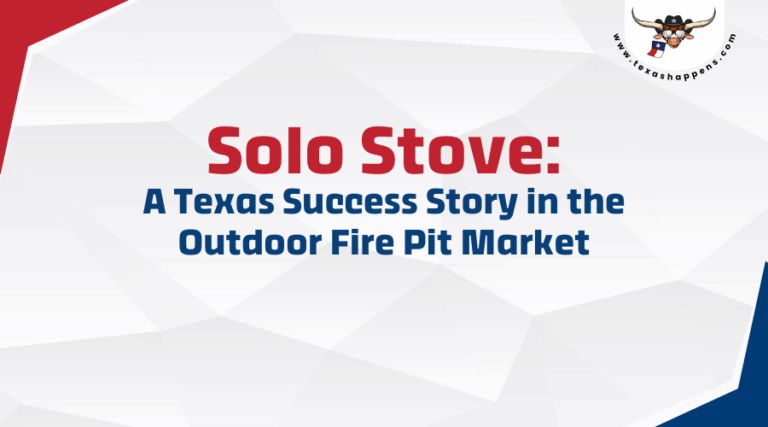Solo Stove transformed from a garage startup into a nearly $2 billion public brand by popularizing smokeless outdoor fire pits built around a patented 360° Airflow system that drives efficient secondary combustion. Founded in Texas, the company refined double-wall airflow designs that dramatically reduce smoke by reburning particulates. Their customer-centric approach built a passionate community of outdoor enthusiasts while driving explosive growth. Under strategic leadership, they’ve become a category leader through authentic user stories and savvy direct-to-consumer tactics. Discover how their Texas roots helped spark a global outdoor movement.
From Garage Startup to Billion-Dollar Brand
When two brothers, Jeff and Spencer Jan, began tinkering in their Fort Worth, Texas garage in 2011, they couldn’t have imagined their humble project would grow into a billion-dollar enterprise. Their mission was simple yet powerful: reconnect people with the outdoors through smarter, cleaner fire.
For two years, they refined a secondary-combustion design, cycling through dozens of iterations and listening closely to early customers. This dedication to continuous improvement paid off as users embraced their compact stoves and later the larger smokeless fire pits. Their products became especially popular with outdoor enthusiasts across Texas—from backyard gatherings to stargazing trips in places like Big Bend.
Under CEO John Merris (2018–early 2024), the company scaled from a fast-growing DTC business to Solo Brands (the parent company) going public in 2021 at an enterprise value near $2B. The patented airflow creates a natural draft that pulls in oxygen and produces hotter, cleaner burns with minimal smoke. Through this rise, the brand emphasized responsible materials and durable construction—key pillars that helped it far exceed the niche camp-stove origins.
The Smokeless Fire Revolution: Solo Stove’s Patented Technology
View this post on Instagram
The heart of Solo Stove’s success is its elegant fix for an old problem: smoke. Its patented 360° Signature Airflow Technology pulls air in through base vents, feeds the fire from below, and channels preheated air up the double wall.
You’ll notice how the dual-wall construction heats incoming air before it jets from upper ports, igniting unburned gases for secondary combustion. That top-rim reburn is what trims visible smoke down to a wisp once the fire’s rolling.
Built from 304 stainless steel, the fire pits resist the elements while delivering repeatable performance. You’re not just buying a metal ring—you’re investing in thermofluid engineering that turns a wood fire into a cleaner, brighter centerpiece for gathering.
Building a Community Around Outdoor Experiences
Solo Stove’s momentum extends beyond clever airflow—it thrives on a vibrant user community that trades tips, maintenance advice, and campfire stories. Through social channels and email support, customers swap wood choices, lighting methods, and ash-care routines, while the brand turns common questions into helpful guides and how-tos. You’ll see them nurture these connections with responsive customer service and practical content that demystifies setup, storage, and safety.
This experiential marketing reframes the products as catalysts for shared moments—family reunions, neighborhood nights, and cold-weather hangs—more than just hardware in the backyard. Their community events showcase that authentic Texan hospitality as they welcome both newcomers and longtime fans to connect over shared outdoor adventures.
Strategic Leadership and Company Growth
Founded by Jeff and Spencer Jan in 2011, this Texas story shows how focused leadership can take a garage idea to national prominence. Early on, the team validated demand through direct-to-consumer e-commerce and relentless iteration, then broadened into larger backyard pits.
When John Merris took the helm in 2018, he layered data-driven decision-making onto the founders’ customer-first ethos and accelerated growth. The firm’s smokeless differentiation proved compelling in the outdoor market, and culture emphasized fast feedback loops and pragmatic innovation. (Merris later stepped down in 2024, with the board transitioning leadership while reaffirming long-term strategy.) Similar to the practical disruption seen in 3D-printed housing, Solo Stove married clever engineering with an everyday need.
The DTC model propelled Solo Brands to $400M+ in annual sales around the time of its 2021 IPO. Importantly, brand expansion into apparel and watersports came via the Solo Brands portfolio—bringing in complementary names like Chubbies, Oru Kayak, and ISLE—while Solo Stove stayed focused on heat, flame, and outdoor cooking.
The Marketing Power of Customer Stories
View this post on Instagram
While leadership and channel strategy laid the foundation, Solo Stove’s surge came from customer-driven storytelling. Rather than traditional mass ads alone, the brand spotlighted real users, real patios, and real campouts—content that surged during the pandemic and fueled outsized growth.
Campaigns mixed authentic testimonials with well-timed partnerships. A late-2023 pop-culture collaboration with Snoop Dogg generated massive impressions and conversation—though it also prompted a brand reset and leadership change in early 2024. Even so, the playbook of user content plus selective influencers helped Solo Stove achieve category-leading share in smokeless pits. The big idea remains simple and sticky: enjoy the magic of a wood fire without the billowing smoke.
Texas Roots With Global Reach
Deep in the heart of Texas, a global outdoor brand took shape when the Jan brothers launched Solo Stove from a Fort Worth garage in 2011. What began as a compact Solo Stove Lite backpacking stove evolved into an international line of smokeless fire pits and cooking systems, ultimately part of a public company valued around $2B.
That Texas grit still shows—rugged functionality, straightforward materials, and a bias for practical innovation. As Solo Brands broadened via acquisitions like Chubbies and Oru Kayak, Solo Stove kept refining fire: better accessories, more sizes, easier cleanup, and safer spark control. Even at global scale, the brand’s identity stays grounded in the Lone Star outlook—bring people together, keep it simple, and let the firelight do the talking.


